Local Search and Behavioral Signals
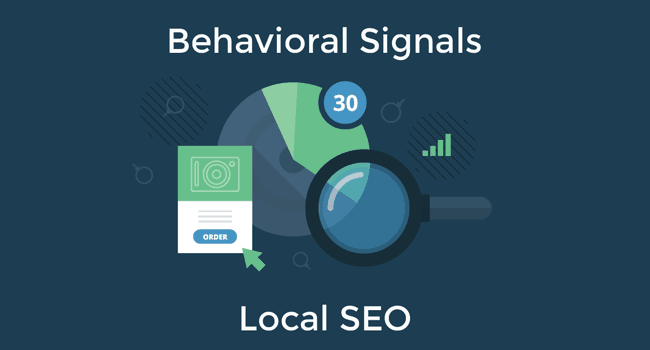
This is the seventh part of our Local SEO series that focuses on optimizing your dental website for search engines. You can view the other posts here:
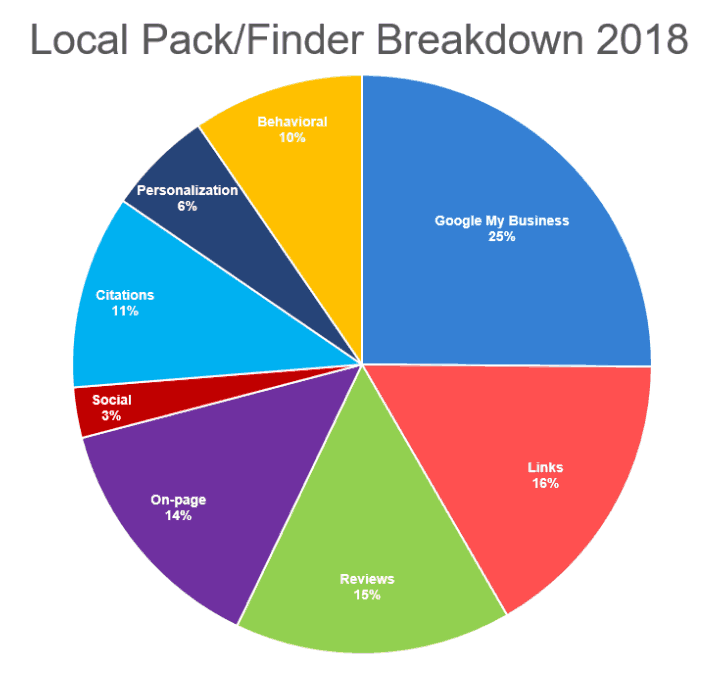
Local search and behavioral signals
According to Local SEO experts, user behaviors and interactions with your website and the search engines influence website rankings. Influential behaviors include clicking on search listings, calling the practice directly from a search result, or visiting a dental practice in person after a search. Specific measurable behavioral signals such as click-through-rates, mobile clicks-to-call, check-ins, etc. have an important influence on dental practice and local business site rankings.
Up to 10% influence on rankings
Behavioral signals make up 10% of local ranking factors (according to the 2018 Local SEO industry survey). The influence of these signals is likely to increase over time because they are difficult to fake and provide accurate measurable information about the popularity of a practice.
Behavioral signals are important to understand because they include factors that are out of your control, such as the proximity of the searcher to your dental practice. These factors have a strong influence on where and how your practice will show up in the search engine result pages. Some of the signals define whether your practice will even appear in the search results for your target audience. These signals are becoming even more important with the prevalence of search from mobile devices and other location-specific devices like Google Home.
Personalized search results are the future of local SEO
Google is building its database of personalized user information to create in-depth understanding of searcher preferences and behaviors. These data profiles will continue to influence local search results with increasingly personalized results. These factors will help you understand the limitations of and opportunities in local search for your dental practice.
Search proximity
Google uses mobile phone location to determine the local map results it displays. Google also has an excellent understanding of laptop and desktop locations, often due to the proximity of your phone to your computer. Google knows a lot about its users! This makes the distance of a practice from the searcher one of the most influential ranking factors in the behavioral signals category.
In the image below, a search from my desktop computer demonstrates that Google knows I am located right in the center of downtown Victoria, British Columbia. It has this information because I have my phone beside me on my work computer which is logged into Google Chrome. The search has provided the closest results within 400 meters in local maps.

In this search below from my phone you can see that Google mobile is displaying similar results.

When we look more closely at the map you can see again that Google knows exactly where we are downtown and only shows practices within close proximity (400m).

This next map is zoomed out a little bit to cover all of downtown Victoria in Local Maps on desktop.
You can see that Local Maps displays results within a 400 meter radius, but there are multiple practices downtown that I could easily walk to. If you want to ensure visibility in Local Maps in a dense urban area, you’ll need to employ strategic search marketing. firstdentist.com can help figure out the best strategy for your local area and target market. You may need to advertise with Google Ads if you are outside of the tight radius area for your target market.
Branded search volume
When someone searches for your practice by name, Google categorizes this as a branded search. The volume of branded searches may be used by Google to understand how popular a practice is. The other keywords used in association with the branded search may also have some influence. For example, the keyword phrase, “Dr. Joe’s Smiles dental implants” might assist with implant-related rankings for “Dr. Joe’s Smiles” dental practice.
It’s difficult to spoof natural branded search so it may be a signal that Google considers important. Established dental practices with high volumes of branded search will rank better in the search results.
Click-through-rate and search behavior
Click-through-rate is the percentage of people who click on your website in the search result pages compared to those of your competitors. The more people click on your listing, the more relevant your listing appears to Google. This signal is controversial but many local SEO experts feel it does have an influence. While several important researchers in SEO have demonstrated through experiments that it does work, Google is constantly adjusting the search algorithm.
Write descriptive title tags
Click-through-rate can be influenced by writing accurate and interesting title tags and meta descriptions for your website. Make sure your title tags stand out in the search engine result page.

Behavior metrics and Local SEO
Other important search behaviors that can impact SEO include:
- Bounce rate
- Time on page
- Google My Business panel interactions
Bounce rate is the percentage of people that leave your site without interacting with it. The previous head of Google’s Webspam, Matt Cutts stated that Google does not use bounce rates or any other Google Analytics metrics as a ranking factor. The reason that it may be valuable to pay attention to your bounce rate is that it may be an indication of issues with the SEO factors Google does consider.
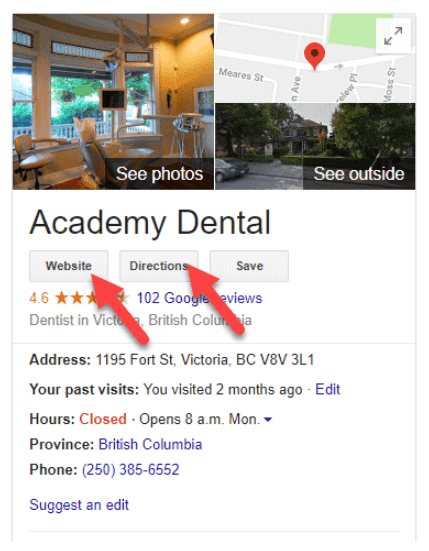
A high bounce rate may indicate that searchers did not find the information they were looking for or that the site takes too long to load or the mobile website experience is poor. You can lower the bounce rate by ensuring your website loads quickly and is designed to help new patients easily find the information they need on both desktop and mobile. First Dentist specializes in developing high-performance websites that engage new visitors.
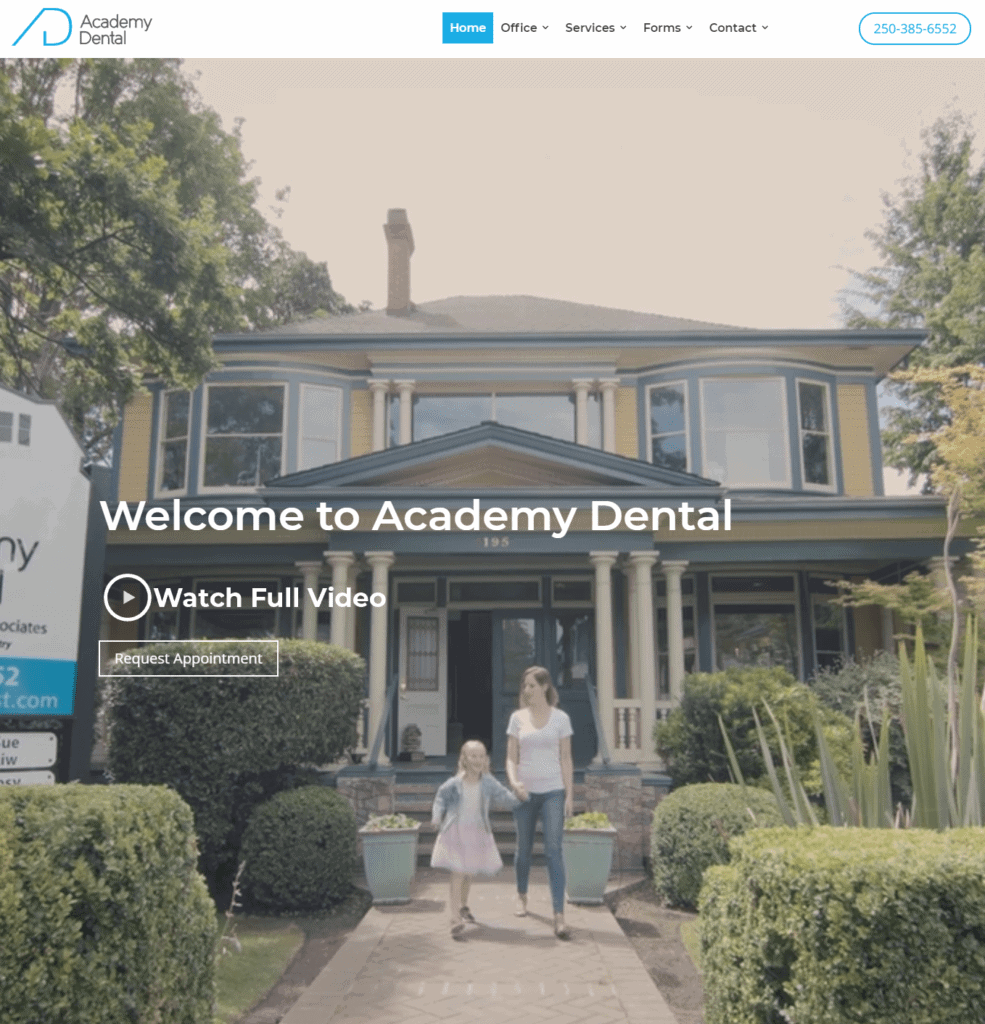
Time on page is the amount of time a website user spends on your website pages. If your website is well designed and engaging, searchers will spend more time on your website.

Google My Business panel interactions
Google analyzes how many people click on your Google My Business knowledge panel to gauge the popularity of your practice. Google My Business panel interactions include:
- Website visits
- Driving directions
- Bookings
- Mobile click-to-call
These interactions inform Google about the popularity of a practice and influence rankings.
Below are screenshots of a Google My Business report on customer interactions with the knowledge panel.
Data profile personalization
Your personal Google account and the search history associated with that account influences search results. Google records and analyzes all of your searches in your mobile phone and computer if you are using Chrome. It also analyzes your voice searches on personal assistants like Google Assistant and Google Home.

If you are a regular Google Chrome user, websites you’ve visited or have received an email from may show up higher in the search results.
Google is continually personalizing search on multiple levels. One of the best ways to take advantage of this ranking factor is to try to engage with your patients through email and text. Create content that they’ll share with friends and family to help your website rank higher in the search results.
Practice visits
Google tracks Android phones that have location tracking enabled, and even tracks Apple users who use IOS Google Maps. Google knows when your patients visit your practice for an appointment, and everywhere else they visit too. Google even knows how long they spend there. This information is displayed in the popular times knowledge panel area:
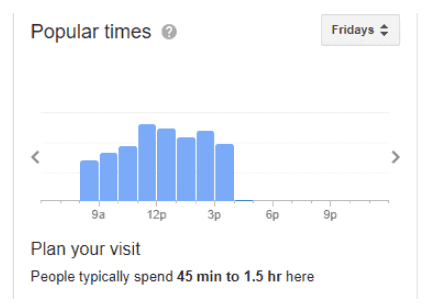
The popular times chart shows advertisers that online ad interactions can lead to offline visits and purchases. This type of data is very valuable to Google and will increasingly affect search results. Google also values real-world visitor data because it can’t be easily faked.
In preparation for SEO, one dental practice owner that we work with tried to set up their Google My Business before their practice opened. Google was immediately aware the practice was not yet open and refused to verify the new practice without pictures and phone calls. Real-world visits are an important signal to fight spammers and people who are trying to generate leads with fake Google My Business profiles. This signal clearly favors established, busy practices. Google knows a lot more about your practice and patients than you think!
Practice visits
Google tracks Android phones that have location tracking enabled, and even tracks Apple users who use IOS Google Maps. Google knows when your patients visit your practice for an appointment, and everywhere else they visit too. Google even knows how long they spend there. This information is displayed in the popular times knowledge panel area:

Guide to Dental Website Design
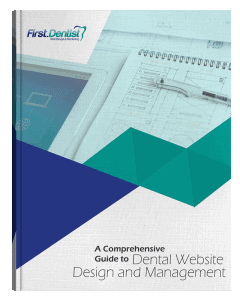
Subscribe and download our ebook that covers everything you need to know to build an incredible website for your dental practice.
